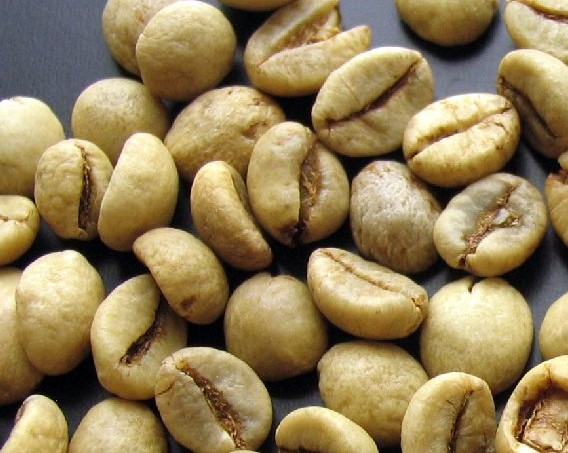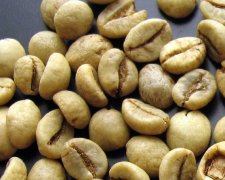Robusta's secret.
Robusta coffee, commonly known as "robust beans", can be grown at low altitudes (200 to 800 meters above sea level), has strong resistance to pests and diseases, is not susceptible to agricultural damage, has a higher annual yield per unit area of coffee trees, and is harvested in large quantities by machines.
Robusta coffee, commonly known as "robust beans", can be grown at low altitudes (200 to 800 meters above sea level), is highly resistant to pests and diseases, is not susceptible to agricultural damage, has a high annual yield per unit area of coffee trees, is harvested in large quantities by machines, and generally costs much less than Arabica coffee.
Robusta coffee is usually plain, dull, pungent, and because most of the world's Robusta coffee is grown in low-altitude areas (author's note: as of May 2008, only India has rare high-altitude, high-quality, washed Robusta coffee beans). When unroasted, it smells like raw peanuts. Cheap Robusta coffee beans usually exhibit a taste between "wheat tea flavor"(medium light roast) and "rubber tire flavor"(deep roast) after roasting, which is difficult to show detailed flavor.
Robusta isn't exactly cheap coffee!
Arabica coffee accounts for 75 percent of the world's coffee production, and quality varies widely, from good to bad. In recent years, a few countries, such as India, have made efforts to improve the quality of Robusta coffee. They have planted Robusta at high altitudes, subjected it to the most careful care, and carefully washed it, resulting in very excellent quality Robusta coffee beans! Top Robusta beans are not cheap either, get rid of the old impression that Robusta is all cheap beans! Therefore, the quality of coffee beans can no longer be judged by the crude and outdated ancient standard of "Arabica beans."
Asia is home to Robusta coffee, with six of the world's largest Robusta coffee exporters, three in Asia alone, accounting for two-thirds of global production. Vietnam, the world's leading exporter of Robusta coffee
Coffee Robusta Linden
Robusta coffee beans are generally used for instant coffee because it extracts coffee liquids that are roughly twice as high as Arabica.
The caffeine content is 3.2%, more than twice that of Arabica, which is 1.5%.
How to identify Robusta coffee beans?
Not in the book, but I think there are three things worth noting. The first was the size, shape, and body shape of the beans. The second was the middle lines and edge lines of the beans.
The third is cooked beans, eat directly, taste.
What you don't know about Robusta (1)
People habitually treat things with dichotomies, good and bad, good and evil, good and bad... The same is true in the coffee world.
Arabica coffee beans are always classified as "good" and their distant relatives, Robusta coffee beans, are often classified as "bad". If Arabica is an angel's gift, Robusta is like the devil's booger, always despised and spurned by coffee drinkers.
Why is Robusta notorious? Robusta beans, which are round in appearance and look like soybeans at first glance, are also known as stout beans. They have strong disease resistance, large yield and low price. Robusta has always been viewed poorly in the boutique coffee world because it usually lacks the charming nuance of flavor. The bigger problem is that because the setting is a low-priced product, the planting treatment method is mostly extremely rough, resulting in defects and smells. It often has an earthy, dirty smell, and sometimes even a smell similar to burned tires and burning plastic.
Ten years ago I had the opportunity to taste several cheap Vietnamese Robusta beans, some of which were memorable because they were like burnt wheat tea with tire seasoning, along with nine other flaws that made me vomit and never want to drink again.
Wow! If Robusta beans suck, why talk about them? Good question! As mentioned at the beginning of this article, everything has good and bad. Good beans take you to heaven, bad beans make you happy! Arabica is like this, and Robusta is no exception! In fact, under the wave of fine coffee in recent years, there have been refined Robusta beans processed with high specifications in the world! The representative of the fine grade Robusta beans, the first to promote India's "Kappi Royale" Robusta.
Kappi Royale means "Top Grade" and there are at least four (and growing) private coffee estates in India that are growing to produce high quality "Coffee Royale""Kappi Royale" Robusta coffee beans to the standard and process of fine Arabica beans! It includes delicate full washing treatment and Pulp Natural membrane drying method half washing treatment popular in recent years.
The arrival of the "Coffee Royal" grade of refined Robusta beans undoubtedly began to change the world's impression of Robusta! Anyone who drinks it will be surprised by its thick and clean characteristics, because of the delicate planting and processing procedures, the flavor performance of the "coffee royal" grade Robusta is mostly quite clean, without the annoying off-flavors of the cheap grade Robusta.
Robusta naturally lacks the airy aromas of Arabica beans, but instead has a thicker, calmer texture and intense walnut, peanut, hazelnut and wheat flavors that resemble peanut butter and hazelnut jelly.
India's "Coffee Royal" grade Robusta is currently producing very little, but it has begun to attract the attention of the elite of the world's fine coffee industry. Italian coffee expert David Schumann David C. Schomer's Espresso Vivace in Seattle, USA, started adding 14% Indian "Coffee Royal" Robusta to its espresso beans a decade ago; Paradise Roasters, the national coffee rating champion, pioneered the North American specialty coffee market by launching a 100% Indian CxR single espresso in 2009, which received 90 and 91 points from Coffee Review in 2009 and 2010! Prove that Robusta is not what he used to be!
By the way, Indian "Coffee Royal" grade Robusta is not cheap, even more expensive than many Arabica beans! So, from now on, please stop saying: Robusta beans are rotten beans-after all, times are different! With the emergence and gradual attention of high-quality Robusta, it is bound to cause some chain reactions and changes to the fine coffee culture (to be continued).
Note: David C.Schomer removed Robusta beans in the second quarter of 2009 and replaced them with a 100% arabica formulation.
What you don't know about Robusta (2 )
If you ask the world's most beloved Robusta bean country or region, the first place is the hometown of espresso coffee "Italy"! If you narrow it down further, more precisely, the largest use of Robusta beans is in southern Italy, such as Palermo, Naples and Sicilia. In fact, in southern Italy, most of the coffee people drink contains a considerable proportion of Robusta beans. 30 to 60 percent is common, and some formula beans contain as much as 80 or even 100 percent Robusta!
Open up the list of beans supplied by local Italian green coffee wholesalers and you will see a list of dozens or even more than two dozen varieties of Robusta green beans from coffee producing areas around the world for local coffee roasters to choose from. This phenomenon does not exist in other parts of the world, such as the United States and Canada, northern Europe, Japan and even Taiwan, and it is incredible.
You may wonder why the Italians mix so much Robusta into Arabica beans. In general, Italians mix Robusta in order to increase the Crema content of Espresso.
This statement is only half true, and there is another little-known reason.
It turned out that southern Italy used to be a poorer region, and people could only afford cheap coffee, so Robusta beans were mixed in at first, simply to reduce costs. However, after years of roasting and blending Robusta in large quantities, coupled with the Italians 'natural sensitivity to cooking, they discovered that Robusta beans have many characteristics that Arabica beans do not have. As long as they are familiar with and fully master these characteristics, a good chef (coffee roaster) can serve dishes with magic (Italian coffee beans). Robusta beans have only 22 pairs of chromosomes compared to Arabica beans, which have 44 pairs of chromosomes, and caffeine content of 1.5% and 2.8% respectively.
I like the analogy. Arabica beans are like earthlings. We're easy to see and familiar with. Robusta beans are like aliens. Although they have the appearance of Earthlings, they are actually completely different inside. Earthlings and aliens have their own advantages and disadvantages, each good at winning the field, although they are different races, can not marry and have children, but through the delicate arrangement of the fruit, put them together cleverly cut off, full cooperation, can contribute their own strengths, stir up a surprising spark!
I was born useful. Robusta and Arabica are gifts from angels. The difference is only in those who use them.

Important Notice :
前街咖啡 FrontStreet Coffee has moved to new addredd:
FrontStreet Coffee Address: 315,Donghua East Road,GuangZhou
Tel:020 38364473
- Prev

Robusta's secret.
[guide] "Robusta" coffee, commonly known as "thick beans", can be grown at low elevations (200 to 800 meters above sea level), has strong resistance to diseases and insect pests, is not vulnerable to agricultural pests, has a high annual output per unit area, and is harvested in large quantities by machine. in general, the cost of production is much lower than that of Arabica. "Robusta" coffee is commonly known as "stout beans", at low elevations (200 above sea level)
- Next

Five tips that must be paid attention to to make a good cup of coffee
[introduction] the average person's acceptance of coffee taste is very subjective. A small number of people ask for high-quality and delicious coffee. The same cup of coffee will have unlimited feelings because of the taste of different people. Generally speaking, there are some ways to cook a cup of taste that is recognized by most people. Generally speaking, people's acceptance of coffee taste is very subjective, and a few people demand high-quality beauty.
Related
- What is the meaning of lactic acid fermentation with coffee bean treatment?
- How to judge the state of foam by sound?
- How does the latte pull out the unicorn pattern? Come to get for a little trick to improve the flower pull!
- Will flower pulling affect the taste of the latte?
- Do you know the history of coffee?
- The difference between honey treatment and sun washing what is raisin honey treatment?
- What kind of milk can a novice use to make coffee foam to keep the foam longer? The correct method and skills of milking tutorial sharing
- Why do washed coffee beans taste sour? Flavor characteristics of washed Coffee
- Introduction to the skill of how to practice the size and height of water injection around the circle of hand-brewed coffee
- How do beginners practice coffee flower drawing from scratch?

